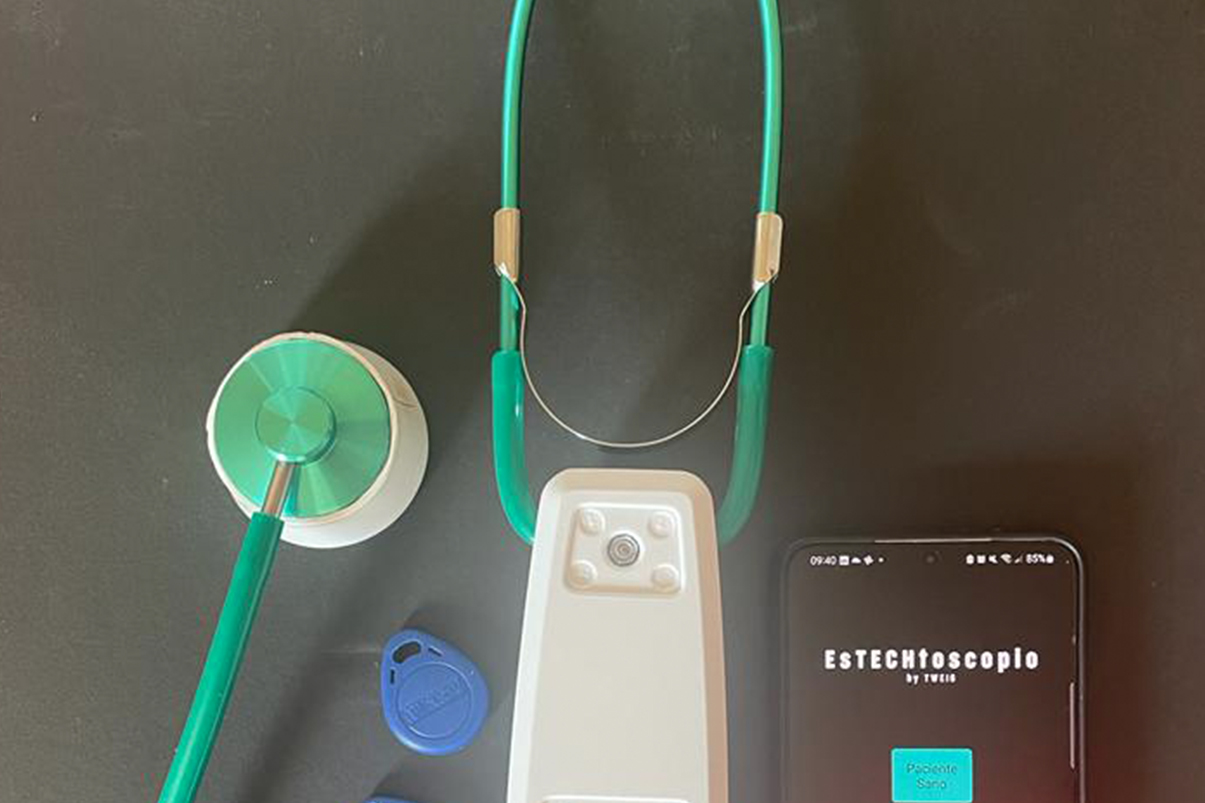sTECHtoscope
Project Overview
sTECHtoscope is an innovative Internet of Things (IoT) device that replicates the functionality of a real stethoscope and serves as a training tool for learning how to use a stethoscope. The device is designed to simulate the audio playback of a real stethoscope, allowing users to practice listening to heart and lung sounds in a controlled and safe environment. The sTECHtoscope is equipped with a high-quality microphone and speaker system, which reproduces the sounds of the heart and lungs with exceptional clarity and detail. The device also features a range of different modes and settings, enabling users to adjust the audio output to suit their individual preferences and needs. To use the sTECHtoscope, users simply place the device on their chest, just as they would with a real stethoscope, and adjust the settings to their desired level. They can then listen to a range of different heart and lung sounds, which are played back through the device's speaker system.
One of the key advantages of the sTECHtoscope is that it provides users with instant feedback on their listening skills, enabling them to identify and correct any mistakes or inaccuracies in their technique. The device can also be used to simulate a range of different scenarios and conditions, such as heart murmurs or respiratory distress, helping users to develop their skills and knowledge in a safe and controlled environment. Overall, the sTECHtoscope represents a valuable tool for healthcare professionals, medical students, and anyone else looking to improve their stethoscope skills. With its high-quality audio playback, intuitive design, and range of different modes and settings, the device offers a unique and effective way to learn how to use a stethoscope with confidence and accuracy.
Project Process
The development process of sTECHtoscope, an IoT device that simulates a real stethoscope and serves to teach how to use a real stethoscope, would likely involve several stages, including:
- Conceptualization: The development process would begin with a concept for the device, which would involve identifying the need for such a device, determining its basic design features and functionality, and evaluating its potential market appeal.
- Design and prototyping: Once the concept has been established, the design and prototyping stage would begin. This would involve designing the physical components of the device, such as the stethoscope head, tubing, and earpieces, as well as the electronic components, such as the microcontroller, speaker, and battery. The initial design would be prototyped and tested to ensure that it meets the functional requirements.
- Audio recording and playback: One of the key features of sTECHtoscope would be its ability to simulate real-world auscultation sounds. This would require recording and storing a library of high-quality audio files of various heart and lung sounds, including normal and abnormal sounds. These sounds would be played back through the speaker of the device and the user would be instructed on how to interpret and diagnose the sounds.
- Programming and testing: The software for the device would need to be programmed and tested to ensure that it is user-friendly and easy to navigate. The device would need to have a simple interface and the ability to provide real-time feedback on the user's performance.
- Manufacturing and assembly: Once the design, prototyping, and testing stages have been completed, the device would be ready for manufacturing and assembly. The components would be sourced, and the device would be assembled and tested to ensure that it meets quality standards.
- Launch and marketing: The final stage of the development process would involve launching the device and marketing it to the target audience, such as medical students, nursing students, and healthcare professionals. The marketing strategy would likely involve social media, online advertising, and partnerships with medical schools and healthcare organizations.
Overall, the development process of sTECHtoscope would involve a multidisciplinary team of engineers, programmers, and healthcare professionals working together to create an innovative and useful medical education tool.

Project Completion
Although the project is in continuous development and improvement, we have a device that can be used by nursing students.
-
Finalize the project
A digital stethoscope for learning has been created and tested
-
Final Result
We have a functional device

